Pericardial Diseases: International Position Statement on New Concepts and Advances in Multimodality Cardiac Imaging
- PMID: 39111992
- PMCID: PMC12156183
- DOI: 10.1016/j.jcmg.2024.04.010
Pericardial Diseases: International Position Statement on New Concepts and Advances in Multimodality Cardiac Imaging
Abstract
Pericardial diseases have gained renewed clinical interest, leading to a renaissance in the field. There have been many recent advances in pericardial diseases in both multimodality cardiac imaging of diagnoses, such as recurrent, transient constrictive and effusive-constrictive pericarditis, and targeted therapeutics, especially anti-interleukin (IL)-1 agents that affect the inflammasome as part of autoinflammatory pathophysiology. There remains a large educational gap for clinicians, leading to variability in evaluation and management of these patients. The latest pericardial imaging (American Society of Echocardiography, European Association of Cardiovascular Imaging) and clinical guidelines (European Society of Cardiology) are >8-10 years of age and may not reflect current practice. Recent clinical trials involving anti-IL-1 agents in recurrent pericarditis, including anakinra (AIRTRIP), rilonacept (RHAPSODY), and goflikicept have demonstrated their efficacy. The present document represents an international position statement from world leaders in the pericardial field, focusing on novel concepts and emphasizing the role of multimodality cardiac imaging as well as new therapeutics in pericardial diseases.
Keywords: cardiac magnetic resonance; constrictive pericarditis; echocardiography; pericardial effusion; pericarditis; pericardium.
Copyright © 2024 American College of Cardiology Foundation. Published by Elsevier Inc. All rights reserved.
Conflict of interest statement
Funding Support and Author Disclosures Dr Klein has received research grants from Kiniksa Pharmaceuticals and Cardiol Therapeutics, and is on advisory boards for Kiniksa Pharmaceuticals, Cardiol Therapeutics, and Pfizer. Dr Cremer has received research grants from Kiniksa Pharmaceutics and Novartis, and is on advisory boards for Kiniksa Pharmaceutics and Swedish Orphan Biovitrum. Antonio Abbate has received consulting fees from Cardiol Therapeutics, Kiniksa Pharmaceuticals, Implicit Biosciences, Novo Nordisk, Olatec, R-Pharm, Serpin Pharma, and Swedish Orphan Biovitrum. Dr Asher has received royalties from Wolters-Kluwer Publishing Company. Dr Brucato’s institution has received funding from Kiniksa Pharmaceuticals as an investigative site, unrestricted research grants from Swedish Orphan Biovitrum and ACARPIA, and travel and accommodation for advisory committee from Swedish Orphan Biovitrum and Kiniksa. Dr Hoit is speaker for Philips Medical. Dr Kwon has received a research grant from the National Heart, Lung, and Blood Institute of the National Institutes of Health (1R01HL170090-01) and has research agreements with Circle cvi42 and Myocardial Solutions. Dr LeWinter has received a research grant from and is on an advisory board for Kiniksa Pharmaceuticals. Dr Lin is on an advisory board for Kiniksa Pharmaceuticals. Dr Luis is a consultant for Medtronic, Kiniksa Pharmaceuticals, Cardiol Therapeutic, and Swedish Orphan Biovitrum Pharmaceuticals; Dr Ordovas has received a research grant from the American College of Radiology; Dr Schenone is on the speaking bureau for Bristol Myers Squibb; Dr Weber is on advisory boards for Kiniksa Pharmaceuticals, Novo Nordisk, and Horizon Therapeutics; Dr Imazio is on advisory boards for Kiniksa Pharmaceuticals and Cardiol Therapeutics. The other authors have reported that they have no relationships relevant to the contents of this paper to disclose.
Figures
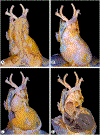
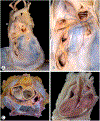



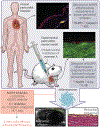





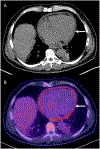


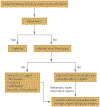






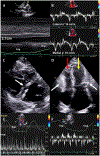














References
-
- Klein AL, Abbara S, Agler DA, et al. American Society of Echocardiography clinical recommendations for multimodality cardiovascular imaging of patients with pericardial disease: endorsed by the Society for Cardiovascular Magnetic Resonance and Society of Cardiovascular Computed Tomography. J Am Soc Echocardiogr. 2013;26:965–1012. - PubMed
-
- Adler Y, Charron P, Imazio M, et al. 2015 ESC guidelines for the diagnosis and management of pericardial diseases. Eur Heart J. 2015;36:2921–2964. - PubMed
-
- Cremer PC, Kumar A, Kontzias A, et al. Complicated pericarditis: understanding risk factors and pathophysiology to inform imaging and treatment. J Am Coll Cardiol. 2016;68:2311–2328. - PubMed
-
- Chiabrando JG, Bonaventura A, Vecchié A, et al. Management of acute and recurrent pericarditis: JACC state-of-the-art review. J Am Coll Cardiol. 2020;75:76–92. - PubMed
-
- Brucato A, Imazio M, Gattorno M, et al. Effect of anakinra on recurrent pericarditis among patients with colchicine resistance and corticosteroid dependence: the AIRTRIP randomized clinical trial. JAMA. 2016;316:1906–1912. - PubMed
Publication types
MeSH terms
Grants and funding
LinkOut - more resources
Full Text Sources
Miscellaneous

